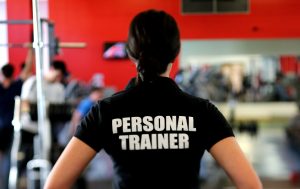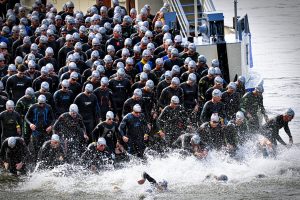Triathlon Running: Gear, Training, and Race-Day Strategy
The run leg is the final push of a triathlon, where both mental and physical endurance are tested. By the time you hit the run, you’ve already swum and biked, so having an effective strategy and the right gear is essential for a strong finish. This guide covers everything from choosing the right running shoes to structuring training and pacing the run leg on race day.
1. Running Kit for Triathlon
Your running kit is crucial for both performance and comfort. Proper gear can help you maintain pace, prevent injuries, and feel confident as you approach the finish.
Key Pieces of Running Kit:
- Triathlon Shoes: Choose lightweight, breathable shoes for faster transitions and comfortable long-distance running. Triathlon-specific shoes often have features like quick-lacing systems and breathable mesh to prevent overheating.
- Running Shorts or Tri-Suit: A tri-suit minimizes transitions, allowing you to avoid clothing changes. If you prefer shorts, choose running shorts with minimal seams to avoid chafing.
- Socks: Invest in moisture-wicking, anti-blister socks. Some triathletes opt for no socks, but they can help prevent blisters, especially in longer events.
- Hat or Visor: Protects from the sun and absorbs sweat, helping you stay cool and focused on the run.
- Sunglasses: Sunglasses protect your eyes from the sun and wind, which can be distracting or painful on longer runs.
2. Running Shoes: Carbon Plate vs. Normal Shoes
The choice between carbon plate shoes and traditional running shoes depends on your goals, comfort preferences, and race distance.
Carbon Plate Shoes: Carbon plate shoes, made popular by elite marathoners, are designed to enhance speed by improving energy return and promoting forward momentum. The stiff carbon plate and lightweight cushioning can help reduce fatigue and improve efficiency.
- Pros: Faster race pace, improved energy return, ideal for short to mid-distance triathlons.
- Cons: Less durable than traditional shoes, often expensive, and not ideal for those who need extra stability or support.
Traditional Running Shoes: Standard running shoes come in various cushioning levels, drops, and support types, making them versatile and durable. These shoes are often more comfortable for longer distances and everyday training.
- Pros: Comfortable, durable, great for all distances, suitable for a variety of foot types.
- Cons: May not provide the energy boost of carbon plate shoes but offer more support and flexibility for diverse training.
Cushioning, Support, Drop, and Fit Considerations
Choosing the right shoe involves understanding how different elements, like cushioning and fit, affect your run.
- Cushioning: Cushioning affects comfort and shock absorption. Heavier cushioning is ideal for longer distances or those who need more impact protection. Lightweight shoes with minimal cushioning are often favored by more experienced runners.
- Support: Look for shoes that match your foot type. Neutral shoes are best for those with a natural gait, while stability shoes offer support for overpronators (those whose feet roll inward).
- Heel Drop: The “drop” refers to the difference in height between the heel and the toe. Higher drops (8-12mm) offer more heel cushioning, while lower drops (4-8mm) encourage a midfoot strike. Choose a drop that feels natural and supports your running style.
- Fit: Shoes should fit snugly around the midfoot with enough room in the toe box to avoid blisters or black toenails. Always try on shoes at the end of the day, as your feet may swell, simulating how they’ll feel after a long swim and bike.
3. Training for the Triathlon Run
Running in a triathlon isn’t just about endurance; it’s about maintaining a strong pace after swimming and cycling. Structuring your training to build speed, endurance, and resilience is essential.
Key Training Components:
- Endurance Runs: Long, steady-paced runs build aerobic capacity and mental toughness. Schedule one long run per week, aiming for 1.5-2 hours at a conversational pace to build stamina.
- Tempo Runs: Tempo runs, or “threshold runs,” are at a pace that feels challenging but sustainable, just below race pace. These runs build speed endurance and improve lactate threshold, helping you run faster for longer periods.
- Intervals and Speed Work: Speed workouts include intervals like 800m repeats or 400m sprints, done at a fast pace with short rest periods. These sessions build leg speed and anaerobic capacity, making it easier to push the pace on race day.
- Brick Workouts: A brick workout combines cycling and running to simulate race conditions. Start with a bike session, then transition immediately into a run. Begin with short runs and progress to race-distance efforts, helping your legs adapt to the unique feeling of running off the bike.
Have a look at our training guide for more information.
4. Managing Run Training in a Multi-Sport Program
Balancing run training with swimming and cycling is essential to prevent overtraining and burnout. Here’s how to incorporate your run training into a multi-sport program:
- Prioritize Weaknesses: If running is your weakest discipline, focus on building run endurance and strength. If running is a strength, maintain your current level and allocate more time to swimming or cycling.
- Rest Days and Recovery: Recovery is key in triathlon training. Include at least one full rest day per week, with active recovery (light swim or stretching) on other days.
- Listen to Your Body: If you’re feeling fatigued or sore, adjust the intensity or volume. Triathlon training places high demands on the body, so avoid “running through” pain or exhaustion.
5. Pacing the Run Leg in a Race
Pacing is crucial during the run leg, as it’s easy to burn out after swimming and cycling. Follow these guidelines to maintain a steady, strong pace:
- Start Conservatively: Begin at a pace slightly slower than your goal. It’s common to feel energetic at the start, but starting too fast can lead to fatigue. Use the first mile to settle into a rhythm and adjust to the feel of running off the bike.
- Gradually Increase Pace: After the first third of the race, aim to pick up the pace slightly if you’re feeling strong. This approach allows you to conserve energy early on and finish strong.
- Control Your Breathing: Stay calm and maintain a rhythmic breathing pattern. If you’re short of breath, slow down to recover.
- Mental Focus: Focus on form and maintain a positive mindset. Remind yourself of your training, and break the run into manageable sections to stay motivated.
6. Nutrition on the Run
Your nutrition strategy during the run will help you avoid hitting the wall. After fueling on the bike, aim for a steady intake on the run.
- Gels and Chews: Gels and energy chews are easy to digest and provide quick energy. Consume one gel every 30-40 minutes or as needed. Practice with these in training to ensure they sit well with your stomach. Consider caffeine gels later in the run if you’re able to stomach these.
- Electrolytes: Replenish electrolytes lost through sweat to maintain muscle function. Use electrolyte tablets or sports drinks available at aid stations.
- Water Intake: Avoid overhydration, but drink small sips at aid stations. If it’s hot, splash water on your face or head to stay cool.
7. The Final Push: Enjoying the Finish
The finish line is the reward for your months of hard work. Here’s how to enjoy the moment while giving it your all:
- Stay Positive: The final stretch can be tough, but focus on the accomplishment ahead. Maintain good posture, focus on breathing, and use positive self-talk.
- Push the Pace if Possible: In the last half-mile, give it your all if you have energy left. It’s your final chance to finish strong.
- Soak in the Atmosphere: Many triathletes find the finish line a memorable moment. Acknowledge your hard work, appreciate the crowd, and cross the finish line with a sense of accomplishment.
Triathlon Running Success: Building a Strong Finish
The run leg of a triathlon challenges endurance, focus, and determination. With the right gear, strategic training, and race-day discipline, you can run strong and finish with confidence. At TriReady, we’re here to support your journey to the finish line, helping you find joy and success in each step of your triathlon experience.



